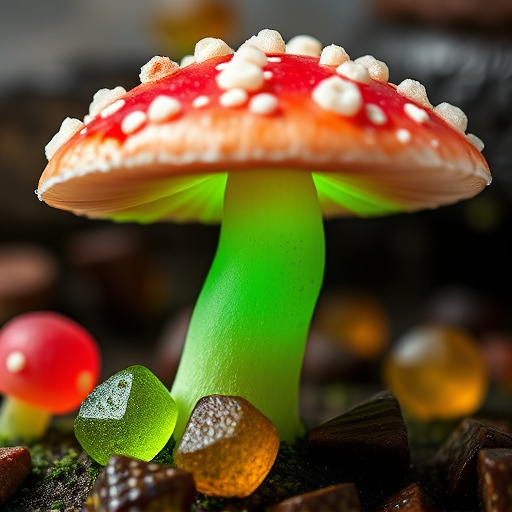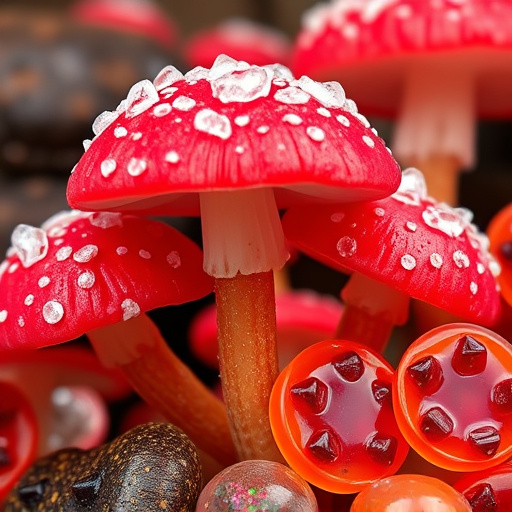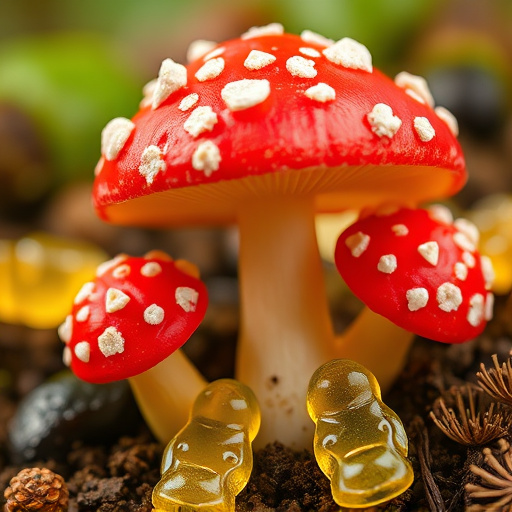Magic Mushroom Gummies for Pain Relief represent a novel and palatable approach to managing various types of pain, combining therapeutic psilocybin with delicious gummy treats. By interacting with brain serotonin receptors, these gummies offer temporary relief from chronic conditions like arthritis, fibromyalgia, and migraines, as well as acute post-operative discomfort. As interest in psychedelic-assisted therapy grows, Magic Mushroom Gummies set a new standard in natural, accessible pain management solutions, potentially reducing reliance on prescription opioids.
“Unravel the captivating world of Magic Mushroom Gummies for Pain Relief in this comprehensive guide. We explore the evolving landscape of these innovative treats, offering a unique approach to managing pain. From understanding their core principles to delving into their therapeutic benefits, this article provides an insightful overview.
Discover the various types and varieties available, each tailored for specific needs. Join us as we navigate the role of magic mushrooms in modern wellness practices, shedding light on their potential to revolutionize pain management.”
- Understanding Magic Mushroom Gummies: A Comprehensive Overview
- The Role of Magic Mushrooms in Pain Management
- Types and Varieties of Magic Mushroom Gummies for Pain Relief
Understanding Magic Mushroom Gummies: A Comprehensive Overview

Magic Mushroom Gummies have gained significant attention as an alternative form of pain relief, offering a unique twist to traditional medicinal options. These gummies are not just a tasty treat but a potent way to experience the therapeutic benefits of psilocybin mushrooms. By infusing these mushrooms into delicious gummy bears or worms, manufacturers provide an accessible and palatable method for individuals seeking natural pain management.
The appeal lies in their ability to potentially alleviate various types of pain, from chronic conditions like arthritis and fibromyalgia to acute post-operative discomfort. The active compound, psilocybin, acts on the brain’s serotonin receptors, leading to altered perceptions and a state of relaxation. This mechanism can disrupt the pain signals transmitted to the brain, providing temporary relief. With growing interest in psychedelic-assisted therapy, Magic Mushroom Gummies represent a novel approach to managing pain, offering both efficacy and an enjoyable consumption method for those seeking alternative treatments.
The Role of Magic Mushrooms in Pain Management

Magic mushrooms, scientifically known as Psilocybin mushrooms, have gained attention for their potential therapeutic effects beyond their recreational use. One notable area where they show promise is in pain management. The active compounds in magic mushrooms, particularly psilocin, interact with the brain’s serotonin receptors, which play a significant role in regulating mood and perception of pain. This interaction can lead to reduced pain sensitivity, making them potentially effective for conditions like chronic neuropathic pain, arthritis, and migraines.
Research suggests that consuming Magic Mushroom Gummies for pain relief can offer a natural alternative or complement to traditional medications. The gummy form is an appealing way to administer psilocybin, as it provides a convenient and discreet method of consumption. Studies have indicated that psilocybin-assisted therapy may help individuals develop new coping mechanisms for managing chronic pain, leading to improved quality of life and reduced reliance on prescription opioids.
Types and Varieties of Magic Mushroom Gummies for Pain Relief

Magic Mushroom Gummies for Pain Relief have emerged as a novel and potentially effective alternative therapy. With their diverse varieties, each offering unique experiences and benefits, these gummies provide a new way to explore the therapeutic properties of psychedelic compounds. As research continues to uncover the full potential of magic mushrooms, it’s clear that these natural remedies could revolutionize pain management in the future. Remember that, while this article provides an overview, more studies are needed to fully understand their effects and optimal use.














